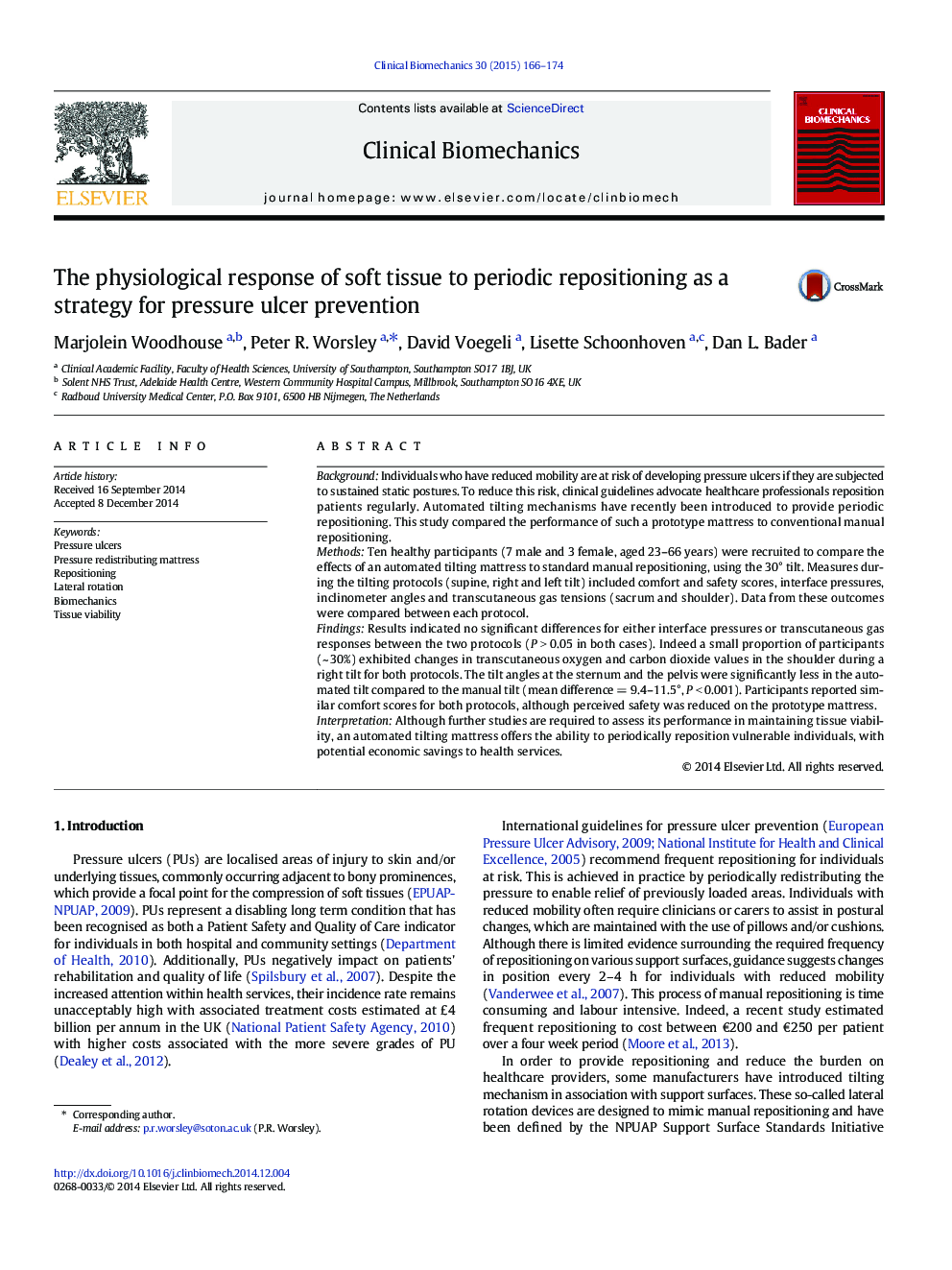| Article ID | Journal | Published Year | Pages | File Type |
|---|---|---|---|---|
| 4050325 | Clinical Biomechanics | 2015 | 9 Pages |
•We assessed the biomechanical and physiological response to periodic tilting.•We compared tilting provided by a nurse and a prototype automated tilting mattress.•The manual tilt and prototype mattress had a similar physiological effect.•There were, however, differences in the angle of tilt and perceived safety.•Tilting mattresses could be used to reposition patients with limited mobility.
BackgroundIndividuals who have reduced mobility are at risk of developing pressure ulcers if they are subjected to sustained static postures. To reduce this risk, clinical guidelines advocate healthcare professionals reposition patients regularly. Automated tilting mechanisms have recently been introduced to provide periodic repositioning. This study compared the performance of such a prototype mattress to conventional manual repositioning.MethodsTen healthy participants (7 male and 3 female, aged 23–66 years) were recruited to compare the effects of an automated tilting mattress to standard manual repositioning, using the 30° tilt. Measures during the tilting protocols (supine, right and left tilt) included comfort and safety scores, interface pressures, inclinometer angles and transcutaneous gas tensions (sacrum and shoulder). Data from these outcomes were compared between each protocol.FindingsResults indicated no significant differences for either interface pressures or transcutaneous gas responses between the two protocols (P > 0.05 in both cases). Indeed a small proportion of participants (~ 30%) exhibited changes in transcutaneous oxygen and carbon dioxide values in the shoulder during a right tilt for both protocols. The tilt angles at the sternum and the pelvis were significantly less in the automated tilt compared to the manual tilt (mean difference = 9.4–11.5°, P < 0.001). Participants reported similar comfort scores for both protocols, although perceived safety was reduced on the prototype mattress.InterpretationAlthough further studies are required to assess its performance in maintaining tissue viability, an automated tilting mattress offers the ability to periodically reposition vulnerable individuals, with potential economic savings to health services.
